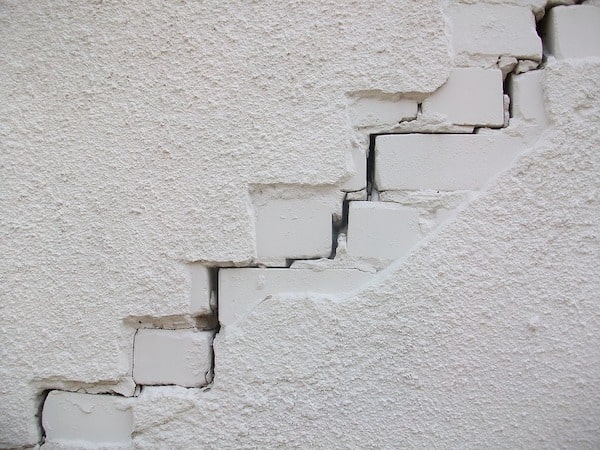When we detect cracks in our house, we must be on alert, especially when its character is structural. This type of fissures, usually appear on load-bearing walls, partitions and even on slabs. In these cases it is convenient to request the help of a professional because, fortunately, there are different methods to solve the problem.
In a previous post, we discussed how to distinguish the different types of cracks, giving clues to know how to discern the severity of each. In most cases, the nature of the land on which the dwelling sits is the cause of the structural cracks.
The most common denominators are usually a bad compaction of the soil or humidity, which can swell the floor increasing the pressure to the point of raising the foundations or, in other cases, the generation of hollows in the firm ground and, therefore, the partial subsidence of the foundations. In both cases it occurs, what we call “differential seats“.
In any event, we have solutions within our reach to save this problematic situation. We must not forget that as important as fixing the cracks in our walls is to remedy the cause that originated them. In this sense, we have two highly recommended alternatives.

Expansive resin
On the one hand, we can resort to the injection of expansive resin, which is one of the least invasive methods and that reduces the dimensions of the works. After carrying out a study of the problem to locate the points where the greatest pressures on the ground occur, a series of micro-perforations, no more than 3 centimeters in diameter and of the depth necessary to achieve the problem, are carried out.
Once these perforations have been made, these resins are injected. It is about polyurethane compounds, bi-component that, while offering very fast reaction times – reaching up to 30 times their initial volume– give a very high expansion pressure (up to 10,000kPa). The resins penetrate the cavities of the ground and compact it, contributing to settle it.
The added advantage of this method is that, when the soil has already been compacted, the rest of the resin that we inject will serve to increase the pressure upwards, raising the sunken foundations to the point that, with due control we desire.
Micropiles
Another of the most recommended formulas to solve differential seats consists of micropiles driven/ rammed by pressure. This option is more invasive than the previous one and requires the intervention of machinery, with which to carry out the multiple perforations necessary for the concreting of piles of a diameter considerably larger than that used in the injection of resins (it can reach 15 centimeters).
In this technique, coupled or even welded steel tubes are used, which are driven/rammed under pressure on the ground with the help of hydraulic jacks. The result is very optimal, as they are perfectly anchored in the original foundation thanks to the high strength mortar.
Among the disadvantages that micropilotage brings with it, is that these are larger works which, in addition, entail a certain complexity due to the high number of holes that may be necessary to undertake, depending on the lack of settlement. To this is added the fact that in places of complicated access, such as basements, these operations seem very difficult to undertake, so perhaps the first method is more appropriate in those cases.
Combined technique
On some occasions, both of these methods can be combined. In this way, in a first phase the ground will be settled by injecting resins until the sunken foundations are lifted.
Subsequently, this mixed technique uses micropiles of no more than 6.5 centimeters of diameter, with the aim of increasing the consolidation achieved with the resin and, in parallel and thanks to its greater depth, relieving the load that the foundation transmits to the ground that is located below it.







Leave A Comment